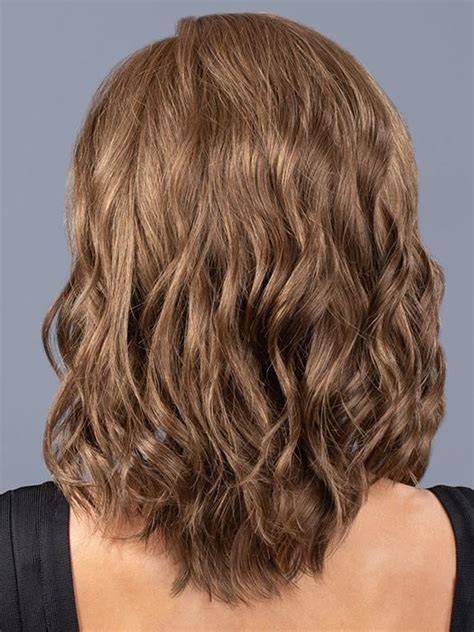Introduction

Synthetic wigs are becoming increasingly popular due to their versatility, affordability, and ease of maintenance. Beach wave synthetic wigs, in particular, stand out with their effortless, beachy texture that complements a wide range of styles. This article explores the benefits, drawbacks, and step-by-step approach to selecting and styling a synthetic wig beach wave.
Benefits of Synthetic Wig Beach Wave
- Naturalistic appearance: Advanced synthetic fibers mimic the texture and movement of natural hair, creating a realistic look.
- Heat resistant: Most synthetic wigs are heat resistant up to 400°F, allowing for styling with hot tools without damage.
- Affordable: Synthetic wigs are significantly more affordable than human hair wigs, making them accessible to a wider audience.
- Versatile: Beach wave wigs can be worn in various styles, from loose waves to elegant buns, offering versatility for different occasions.
- Low-maintenance: Synthetic wigs require minimal care and maintenance, making them ideal for busy individuals.
Drawbacks of Synthetic Wig Beach Wave
- Less breathable: Synthetic fibers can trap heat and moisture, potentially causing discomfort during prolonged wear.
- Limited lifespan: Synthetic wigs typically last for 6-12 months with proper care, which is shorter than human hair wigs.
- Tendency to tangle: Synthetic fibers can tangle more easily than natural hair, especially if not handled correctly.
- Limited color options: The color range of synthetic wigs may be limited compared to human hair wigs.
- Risk of allergic reactions: Some individuals may experience allergic reactions to the chemicals used in synthetic fibers.
Step-by-Step Approach to Synthetic Wig Beach Wave Selection and Styling
1. Choose the right wig cap:
- Ensure the wig cap fits snugly without causing discomfort or tension.
- Consider the cap construction (e.g., lace front, monofilament) based on your desired look and budget.
2. Select the appropriate length and texture:
- Beach wave wigs come in various lengths, from short to long. Choose a length that complements your face shape and hairstyle preferences.
- Pay attention to the density of the wig, as it affects the fullness and volume of the waves.
3. Style the wig:
- Use a wide-toothed comb or a wig brush specifically designed for synthetic hair.
- Avoid using excessive heat as it may damage the fibers.
- Curl the ends with a curling iron at a low temperature to enhance the waves.
- Apply a wig spray to hold the style in place and reduce frizz.
Comparison of Pros and Cons
| Pros | Cons |
|---|---|
| Naturalistic appearance | Less breathable |
| Heat resistant | Limited lifespan |
| Affordable | Tendency to tangle |
| Versatile | Limited color options |
| Low-maintenance | Risk of allergic reactions |
Pain Points and Motivations Associated with Synthetic Wig Beach Wave
Pain points:
- Discomfort or overheating due to poor breathability
- Frequent tangling and knots
- Lack of personalization options (e.g., cutting or coloring)
- Limited lifespan compared to human hair wigs
- Potential allergic reactions
Motivations:
- Desire for a natural-looking, beachy hairstyle without the expense or maintenance of human hair
- Convenience and ease of use
- Affordability and accessibility to a wider audience
- Versatility for different styles and occasions
Conclusion
Synthetic wig beach wave offers an attractive and budget-friendly alternative to natural hair wigs. By understanding the benefits and drawbacks, as well as following the step-by-step approach, you can select and style a synthetic wig beach wave that meets your needs. While there are some limitations associated with synthetic fibers, the advantages of natural appearance, versatility, and low-maintenance make them an excellent choice for individuals seeking a stylish and affordable hair solution.
